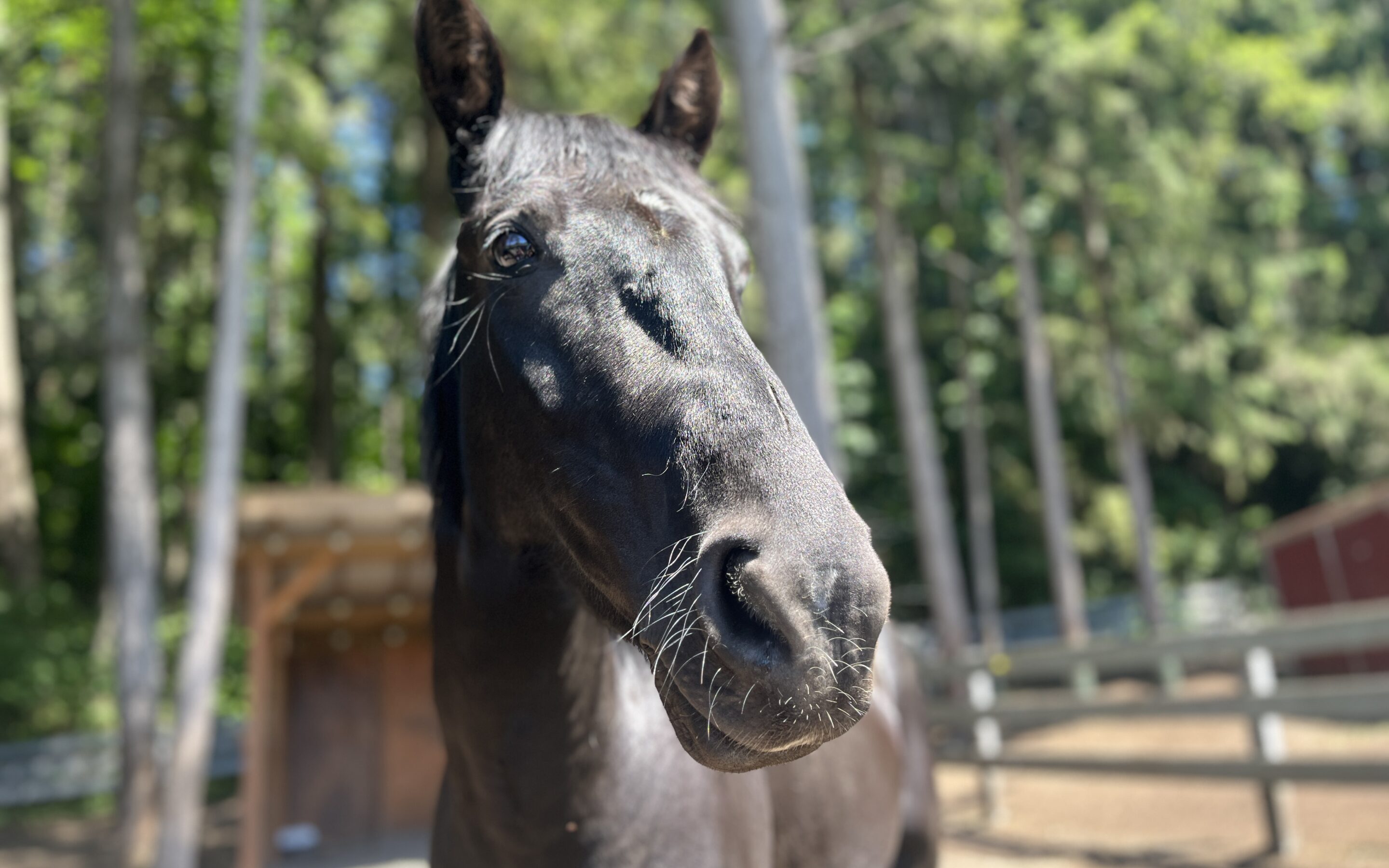Horses have a remarkable field of vision, able to see about 350 degrees around them. Each eye can work independently of the other, which makes sense – horses, prey animals by nature, have the best chance of survival if they can scope out almost the entirety of their surroundings at any given time. In our horsemanship, we talk a lot about ‘turning loose’ to an eye, which essentially means helping the horse learn that they are able to move their feet into an area that their vision may be obstructed in. A similar concept also applies to a horse’s blind spot areas, especially the one below their chin. This is a dangerous spot for a horse to feel insecure about, for even with a horse who seems perfectly gentle, an issue with things in their blind spots could be potentially tragic for someone casually ducking under their neck to switch sides, or a dog or child getting a little too close underfoot.
In this video, Joel works with Poppy on that blind spot issue. It is important that a horse learns to respond, not react, to a stimuli in their blind spot, both for their own empowerment and for the safety of those around them. The first times Joel touched Poppy with the flag, she struck out as soon as it entered the zone under her chin, rearing and pawing. A defensive behavior on her end, but you can understand how it could be dangerous for those around her. It took a lot of work for Poppy to begin to realize that the flag wasn’t a threat, and it is still quite a work in progress. It is an unnatural thing for a horse to learn to trust that things in their blind spots aren’t going to hurt them, so for a horse like Poppy who is clearly so predisposed to feeling stressed by things outside of her field of vision, she has made some pretty immense changes. We are currently in the process of preparing Poppy to be a riding horse, and look forward to getting her as ready as possible on the ground so she has the best chance of success into her future.


